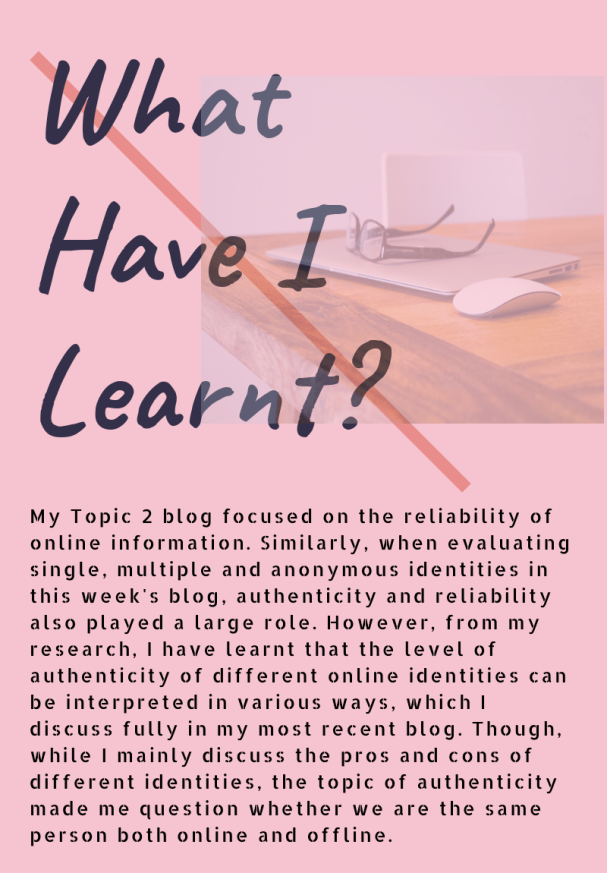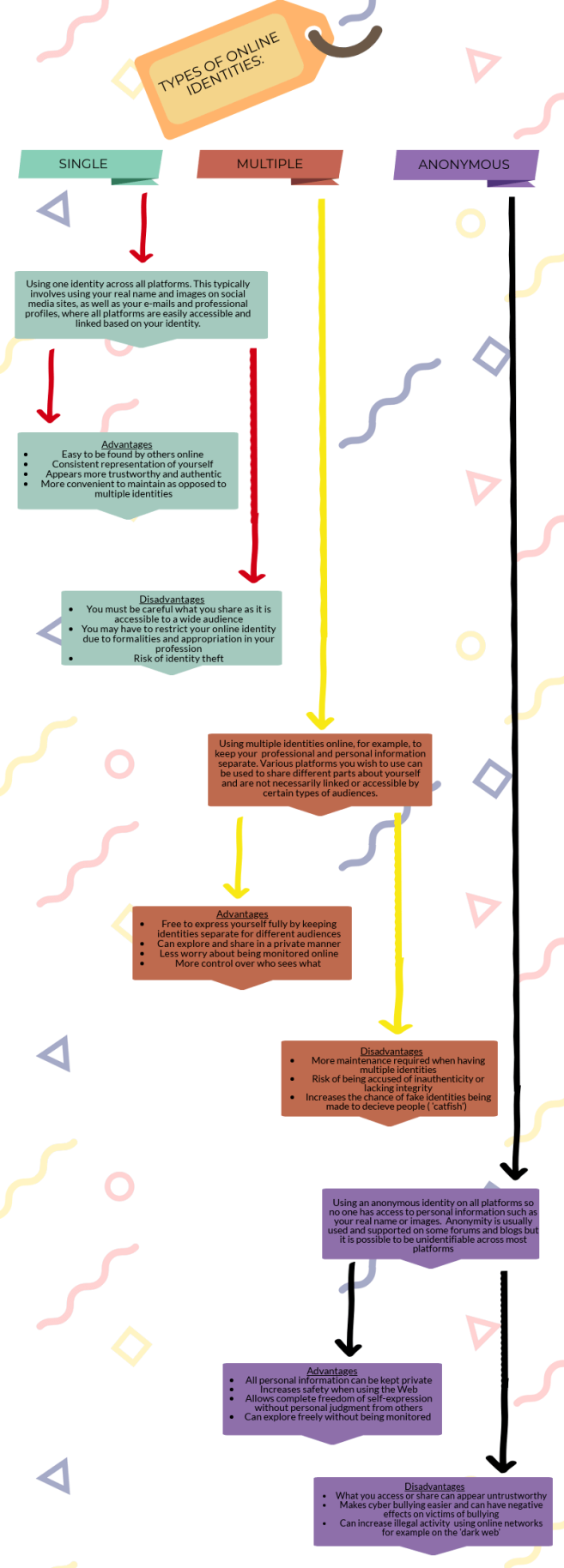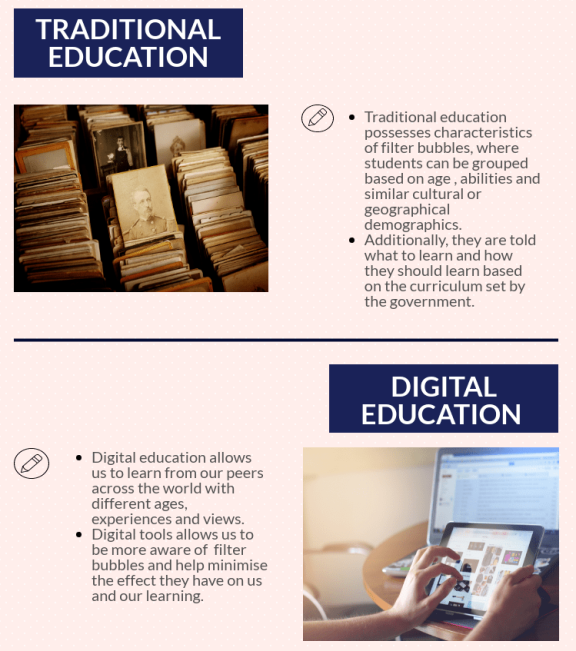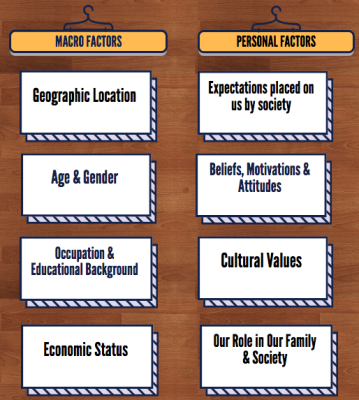
Topic 3: Reflection
My Discussions:
I discussed this matter further with Tewsdae, who mentioned that people used online identities in the past to detach themselves from real life. At first, I didn’t agree, but upon discussion she pointed out a blogger who posts a more “unfiltered” reality on motherhood.
Continue reading →





